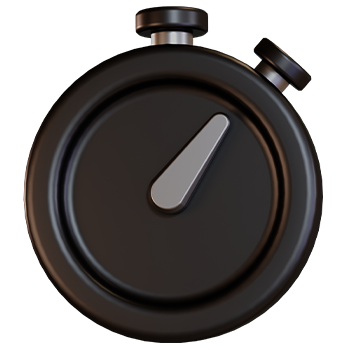

Standing out online has always been about capturing your audience’s attention and – most importantly – keeping it. Recently, short-form content platforms and features such as TikTok, Instagram Reels, YouTube Shorts, and even Tweets have resolutely pushed short-form content into the top spot.
Quick doses of information and dopamine became the order of the day, with catchy six-second videos and breezy listicles dominating the online scene. However, certain landmarks are hinting at a shift towards long-form content regaining its online popularity.
The truth is that the boundary between long-form and short-form is somewhat variable. There are some who say that more than 700 words is a long-form piece of written content, whereas others would say that more than 1,500 words is where that definition begins. What makes this an even more complicated definition is the fact that both written pieces and videos can be long-form, as both are considered content in the online world.
In short, there isn’t a clear definition of the two forms floating around. We can put some loose ranges around them using data from several content marketing platforms, as we have done below:
A more holistic way to define long-form and short-form content is to think of the piece in terms of both depth and length. How long is the content, whether written or filmed, and how deeply does it explore a topic?
Robust, authority-building content that dives deeply into a topic and falls towards the longer end of the spectrum could comfortably be called long-form. Short bites of information that explore a shallower area of a given topic are generally considered short-form.
The internet is a big place, so any guidebook to its various corners is guaranteed to be incomplete. That said, long-form written content will typically appear as lead magnets, downloadable resources, on news platforms, or as think pieces or deep dives on blogs. Long-form video content is prevalent on platforms such as YouTube, Vimeo, and other browser-based video-sharing platforms.
Short-form articles are common boredom busters on platforms such as BuzzFeed. However, they are also an essential part of content marketing that many companies and brand builders utilise. The boredom economy has driven a sharp uptick in short-form popularity in recent years, so content marketers and social media strategists have been riding and driving this wave.
Interestingly, short-form video content began as a nucleus on apps such as Vine and TikTok. However, it has been steadily carving a niche for itself on larger video-sharing platforms thanks to the popularity it has been enjoying.
To understand whether 2023 will be the year that long-form content regains top-dog status, it’s important to explore how short-form content has grown and when the reigning title changed hands.
Social media as we know it today is the most concentrated location of short-form content, encapsulating everything from micro-blogging to short, snappy videos. Platforms such as Twitter and Tumblr – founded in 2006 and 2007 respectively – encouraged the popularisation of microblogging and short-form written commentary.
Then, slowly, quietly, the landscape began to change. Instagram found its legs in 2010, and just three years later, Vine – the first short-form video-sharing platform of its kind – came to life.
Dominoes began to fall, with several other existing platforms introducing or enhancing their video-sharing features to compete with Vine’s popularity. Vine’s downfall began in 2016, when Instagram introduced a 15-second video format for posting. Despite attempting a similar change, Vine eventually fell to the tide of other apps with more comprehensive features in 2017.
Vine stars migrated to other platforms, awaiting a new home – one that finally came with the rise of TikTok (formerly Musical.ly) in 2018. Since then, the impressive popularity of this short-form video-sharing platform (and others) has prompted the creation of features such as Reels, YouTube Shorts, Snapchat’s Spotlight, and even a LinkedIn short-form video format.

One question remains: why is short-form content so popular?
We all know the addictive feeling of losing hours to the dreaded scroll. The invention of the ‘infinite scroll’ in 2006 ensured that users could continue scrolling for hours and hours without the previously necessary interruption of a ‘next page’ selection. This feature has become prevalent across many platforms, most notably short-form content-sharing platforms such as TikTok.
Short-form content is inherently faster to consume than long-form content, providing a small dopamine hit with every encounter. Paired with the infinite scroll mechanic, these platforms allow their users to mainline dopamine on an easy-to-access platform. This stimulates the human dopamine-reward pathway, which encourages users to return again and again.
This cocktail of human psychology and technological prowess is a key driver of the popularity of platforms trading in short-form content.
However, as with anything concerning the online world, things are always changing. There are hints popping up around the net that indicate that long-form content – articles and videos alike – is rising in popularity once more.
So, what do these hints mean for your ongoing content marketing strategy?
Quality content remains king. Consumers are gravitating towards companies that they can connect with, craving both long-form authoritative content and short-form humanising content. Your ideal avenue is contextual, with B2B companies more likely to benefit from long-form articles than B2C. However, this is entirely industry dependent.
Across the board, both short-form and long-form content types offer potential benefits.
While it can be tempting to follow the swinging of the pendulum, these upticks in long-form content popularity don’t suggest a need for a total strategy reset. Instead, they indicate that a balanced strategy incorporating both forms is crucial.
2023 is the year of dual-pronged content strategies. Balance both sides of the scale, and you will yield great returns in the long run.